#2013 Nebelhorn Trophy
Explore tagged Tumblr posts
Text



Sonia Lafuente skating to Death and the Maiden by Franz Schubert for her short program at the 2013 Nebelhorn Trophy and 2014 European Championships.
(Sources: 1 and 2)
#Sonia Lafuente#Figure skating#Spain#Death and the Maiden#Schubert#2013–2014#2013 Nebelhorn Trophy#2014 Europeans#Women
2 notes
·
View notes
Text
Fun With Jump Arm Variations
When jumping, different skaters put their arms in different places, but generally they are pressed flat against the torso, especially on higher-revolution jumps. This compressed shape increases the skater’s rotational speed, which is important for attempting triples and quads.
But as anyone who has watched much skating has seen, you can jump with your arms in different positions, too. There are two main arm variations you will see in modern skating programs:
One arm above the head - these are nicknamed ‘tanos’ after Brian Boitano, who did not invent but did popularize the variation. Ones where the arm is bent a lot may be derisively nicknamed ‘helicopter tanos’, as some fans don’t like how they look. (Brian Boitano 1988 Olympics SP, Brian Orser 1988 Olympics SP, Petra Burka 1965 FS, Wendy Burge 1976 Olympics FS, Ekaterina Kurakova 2022 Euros FS)


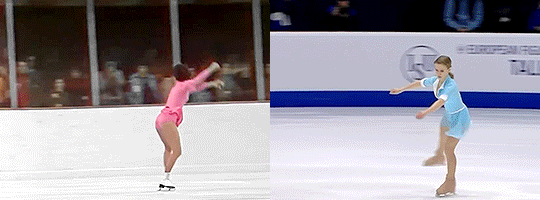
Two arms above the head - these are nicknamed ‘rippons’ after Adam Rippon, who also did not invent them but popularized them when he started doing it on his lutz. (He did tanos on it for a while, but then started using both arms when he trained with Brian Orser, because he felt bad doing ‘tanos’ in front of Orser, who famously took silver behind Boitano at the Olympics.) (Adam Rippon 2016 GP France FS, Midori Ito 1988 Olympics SP, Ting Cui 2018 JGP Ostrava SP, Sihyeong Lee 2021 Nebelhorn FS)


However, there are also other arm variations. These are all rare nowadays, although if you watch older programs, you are more likely to spot a variation that’s not a tano or rippon. Ones I’ve seen include:
Hands on hips - these used to be much more popular back in the day but have fallen out of fashion. I would guess it’s because they slow down rotational speed too much, as every one I have seen is a double except this one by Michael Chack, but I don’t know for sure. (Jill Trenary 1990 Worlds FS, Michael Chack 1992 USNats FS, Rory Flack 1988 USNats SP, Tonia Kwiatkowski 1988 USNats SP, Midori Ito 1987 Worlds SP, Anna Kondrashova 1988 Olympics SP, Yuzuru Hanyu 2010 JPNats FS)

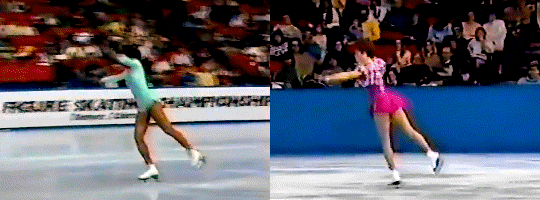

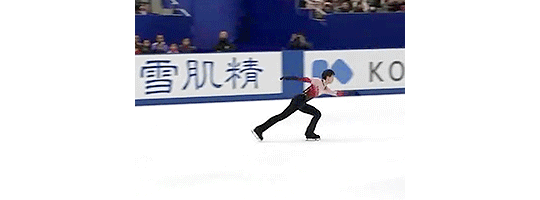
Helicopter arms - this one has been used as a warm-up by Yuzuru Hanyu, and I’ve spotted it in competitions a couple of times with single and double jumps (Rory Flack 1994 US Open Artistic Program, Yuzuru Hanyu 2012 Finlandia Trophy SP warmup)

Arms behind back - I’ve only seen this one performed by Jason Brown in his Riverdance program, where depending on the event he placed either one or both arms behind his back during the second jump of this combo (2013 SA FS, 2014 Nats FS)

Arm switching midair - I’ve only seen this one in this lovely axel variation by John Curry (1976 Olympic SP)
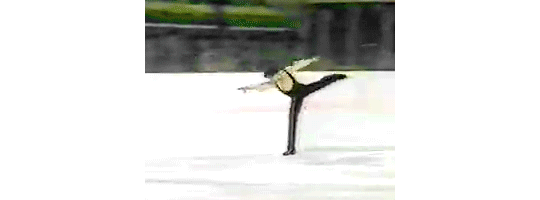
Hands by the head - I believe I may have seen this used by at least one other skater, but the only example I have at hand is this one by Nancy Kerrigan (1990 Goodwill Games SP)

Beginning in 2009, ‘varied position in the air’ became a positive GOE bullet point for jumps. This was because they are supposed to add to the difficulty of a jump, although I’ve seen arguments back and forth from skaters about how true that is for some arm positions (and even if which arm is raised makes a difference for tanos). Years later, they exploded in popularity, particularly in the women’s competition. The trend had its beginning around 2014 or so; the previous season, junior World medalists Evgenia Medvedeva and Serafima Sakhanovich were given programs constructed to include raised arms on a couple of jumps, which wasn’t too unusual, but in 2014, their programs contained many more of them. Medvedeva would go on to dominate the senior circuit for several years and notably used raised arms on most of her jumps during that time, which started the trend in earnest among other skaters.
This GOE bullet point was removed for the 2018-2019 season. But if arm variations no longer get that bit of GOE, why do we still see them so often? There are probably a few reasons:
Skaters who trained them for GOE a few years ago got used to doing them that way and don’t want to mess with their muscle memory
They can add to a program aesthetically
Skaters and their teams may still hope to impress the judges by using them
Skaters have said that rippons help straighten their jump axis
I’ve also seen speculation that rippons can be used to help muscle jumps using the upper body in some cases
I would also like to shout out arm variations on jump exits that aren’t the standard check-out position. These aren’t as common as mid-air variations nowadays and rarely get talked about as their own thing - probably in part because they were never a GOE bullet - but they can add difficulty to the exit as well as give a nice choreographic touch to a program. You can see a few in the above gifs, but here’s a few more:

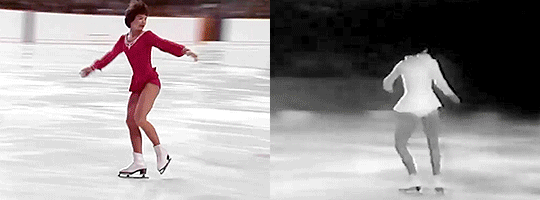
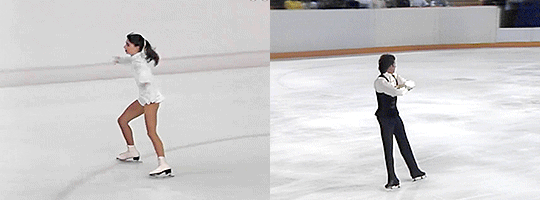
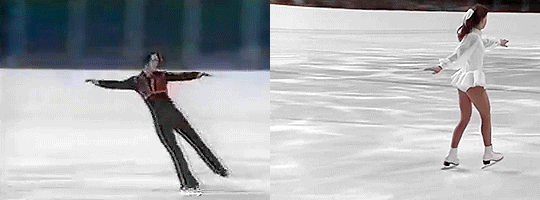
(Petra Burka 1965 Worlds FS, Yuzuru Hanyu 2021 “White Nights” EX, Anett Pötzsch 1976 Olympics FS, Hana Mašková 1968 Worlds FS, Claudia Kristofics-Binder 1976 Olympics FS, Brian Boitano 1988 Olympics SP, Vladimir Kovalyov 1976 Olympics SP)
#figure skating#fskateedit#fs history#Yuzuru Hanyu#Midori Ito#Brian Orser#Brian Boitano#Jason Brown#John Curry#Adam Rippon#Rory Flack#Ekaterina Kurakova#gifs#I went kind of crazy on the gifs here#long post
205 notes
·
View notes
Text
im bored rn so ill talk about my coach oc in my figure skating dr (based her off of someone irl but I won't say who, i wanna see if anyone can guess it) :D
Name: Havent decided on one but if anyone has ideas id love to hear them
Age: 48 (as of 2022, so born in 1974)
Nationality: Russian
Achievements: Russian Nationals (1 gold, 2 silver and 1 bronze), European Championship (1 silver, 1 bronze), GP Cup of Russia (1 silver, 1 bronze), Nebelhorn Trophy (1 silver), Skate Canada (1 silver), Schäfer Memorial (1 bronze), GP NHK Trophy (1 bronze)
Backstory: She skated in Singles when she was younger but due to an injury while training her 3A she had to unfortunately give up her career in 1998 (at age 24) and started coaching first in St. Petersburg alongside Tamara Moskvina and later in Moscow alongside Eteri Tutberitze. She married a German with Russian roots, who at the time was living in Moscow due to work reasons, in 2009 and together they moved back to Germany in 2013.
Coaching: She started coaching me in 2014 after she saw me in a group skating class at a rink in my home town. I'm the only student she is coaching at the moment although she is involved in my home club as well. She choreographes all my programs (and used to choreograph her own as well btw) and is an ISU technical specialist as well.
idk if i forgot anything but if i did just tell me in the comments haha id love to talk more about her (btw idk if its realistic to just have one coach so if its not pls tell me and ill script someone else too haha)
#shifting realities#desired reality#shifting#shifters#reality shift#shift#shifter#shiftblr#shifting diary#reality shifting#figure skating dr
11 notes
·
View notes
Text
Figure Skating Events: Fanfiction Guideline
(AKA: The guide I’m writing out because I figured there had to be more skating competitions that the Grand Prix series, Nationals, 4CC, Olympics, and Worlds but god are the Wikipedia pages for them a mess.)
So, the Wikipedia page for the list of figure skating events is vaguely a mess if you intend to use it for Yuri on Ice fanfiction like I do, so I took some time to read through it and make sense of the qualifications, multiple listings/renaming of events, outdated/short-lived events, and missing hyperlinks to pages about the events. I’ll try to link everything I can and hope I don’t mess up.
Fall Events:
ISU Grand Prix Series/Junior ISU Grand Prix Series
These series are specifically for the top ranking international skaters, and they are both slightly different between senior and junior levels. It was formerly named the ISU Champion Series. I’ve listed approximate dates they are held on.
Grand Prix for Seniors has 6 Events:
Skate America (~Oct. 18-20)
Skate Canada International (~Oct. 25-27)
Cup of China (~Nov. 8-10) *Note in 2018 was temporarily replaced with Cup of Helsinki but resumed in 2019
Trophée de France (~Nov. 13-15)
Rostelecom Cup (~Nov. 15-17)
NHK Trophy (~Nov. 22-24)
Grand Prix Final (~Dec. 10-13)
The Junior Grand Prix has different qualifying events but shares the final with the senior event. It usually has ~7 qualifying events that alternate every year from a list of 35 events. Meaning the qualifying events change from year to year.

*Note Uzbeikistan was supposed to be a new 2020 event and an additional 36th event.
If you want to know what events were during a specific year/season I’ve provided a google docs excel sheet here.
There is also another skating competition series that is ranked directly below the Grand Prix Series but above the other competitions called:
The ISU Challenger Series (Created in 2014)
This series is also held in the fall around the same time (August 1st-December 15th) as the Grand Prix Series. It is a senior only event, but some events predate the series and have junior competitions that are not part of the series.

Events:
Asian Open Trophy (~Oct. 30th-Nov. 3): This event existed prior to the Challenger Series and was called The Asian Figure Skating Championships. It is either held in China, Hong Kong, Thailand, Philippines or Taipei. It has existed since 2007 and was a Challenger Series event in 2018 & 2019. Until 2018, it was only open to Asian Countries. It is both Junior and Senior Level. *Note was not held in 2009.
Autumn Classic International (Sept.12-14th): It has existed since 2014 and occurs in Canada. It is a Junior and Senior Level event. *Note it was not a Challenger Event in 2015.
Finlandia Trophy (~Oct. 9-11th): This competition predates the Challenger Series and was established in 1995.Is held in Finland. It is a senior level event only. Has been part of Challenger since 2014.
Golden Spin of Zagreb (~Dec.5-8th): This predates the Challenger and is held in Croatia. It has always been a senior level event and Junior since 2017. Only the senior level event is Challenger.
Ice Star (~Oct. 18-20th): Predates the challenger series and has only been included in 2017 & 2019. Held in Belarus.
Lombardia Trophy (~Sept. 13-15th): Predates 2013 and is event since 2014 but not in 2015. Held in Italy. Has both Juniors and Seniors.
Nebelhorn Trophy (~Sept. 25-28th): Predates 1969 as seniors only. Challenger event since 2014. Held in Germany.
Ondrej Nepela Trophy (~Sept. 19-21st): Predates 1993 as seniors only. Challenger event since 2014. Held in Slovakia.
Warsaw Cup (~Nov. 14-17th): Existed since 2012, seniors and Juniors. Challenger since 2014 except for 2018. Held in Poland.
U.S. International Classic (~Sept. 17-22nd): Existed since 2012 and Challenger since 2014. Seniors only.
*Note: You can use Figure Skating Fandom Wiki to see what countries participate.
Former events: Denkova-Staviski Cup (2015 Oct. 20-25th Bulgaria), Inge Solar Memorial – Alpen Trophy (2018, Nov. 11-18th Austria), Ice Challenge (2014,2015, Nov. 11-16 & Oct. 27-31st , Austria), Mordovian Ornament (2015, Oct. 15-18th, Russia), Tallinn Trophy (2015-2018, Mid Nov. Estonia), Volvo Open Cup (2014, Nov. 5-9th Latvia).
After both Fall series end in December most countries have a National Championship or send skaters based on their international ranking.
After that there are ISU Championships.
1. European Figure Skating Championships AKA Europeans (January)
2. Four Continents Figure Skating Championships AKA 4CC (February)
3. World Junior Figure Skating Championships (Late February/ Early March)
4. World Figure Skating Championships (4th Monday of Feb. & 2 weeks after 4CC or Europeans)
Bonus: The Nordic Championships but only Christophe Giacometti would compete.
There is also a list of Annual competitions that do not fall under these categories.
International Cup of Nice: (Oct-Nov in Nice,France) Has been held since 1995 with the exception of 2005. Both Senior and Junior event.
Bavarian Open: (Early Feb. in Germany) Has been an ISU event since 2011. Both Senior and Junior Event.
Egna Spring Trophy: (End March Italy) Held since 2011, both Junior and Senior event.
Coupe Du Printemps/Spring Cup: (March Luxembourg) Held since 2012, both Junior and Senior events.
Japan Open: (~Oct. 5)
The Japan Open is an annual senior international figure skating team competition organized by the Japan Skating Federation. The current format (team event) was established in 2006. The competition is held every autumn in Japan. Invited skaters compete in the disciplines of men’s and ladies’ singles. Skaters perform a free program but no short. Individual results are combined for a team standing.
Medals Winner Open: An event held in 2012 (Oct.), 2015, 2016 (Jan.) by the JSF and sanctioned by ISU. Invitational event for skaters that won medals in major ISU competitions like Grand Prix, Europeans,4CC, Worlds & Olympics. It’s a senior only event where skaters preform only a free program and they are scored heavily on artistic values. Was hosted in Japan.
World Team Trophy: (~April 16-19, Japan) Held in 2009, 2012, 2013, 2015, 2017, & 2019. A team competition between six countries ( the US, Canada, Japan, France, Russia and China).
Multi-Sport Events Hosted on alternative Years/ Non-Olympic
Winter Universiade: Held every 2 years since 1960′s (expect between ‘72 & ’81). Is a multi sport event. Dates vary.
Winter Asian Games: Held in 1986,1990,1996,1999,2003,2007,2011, & 2017. Is a multi sport event. Dates vary. Held in Japan, China, South Korea, or Kazakhstan.
Obviously the Olympics as well but I shouldn’t need to mention but the official last event of the year is:
Triglav Trophy. It is held in April in Slovenia, and is both a senior and junior event.
Okay, so I think I covered every competition that a male single’s figure skater could compete in during the time frame of the Yuri on Ice characters skating careers. These were all pulled from the List on Wikipedia and organized over several hours. Hopefully there are no issues with the links.
#Yuri on ice#Yuuri Katsuki#Victor Nikiforov#Viktor Nikiforov#Victuuri#Viktuuri#Yuri Plisetsky#fanfiction#ice skating#competitions#The Ice Skating Guide#christophe giacometti#phichit chulanont#jean jacques leroy#it took forever#i made a google doc spreadsheet for you guys
17 notes
·
View notes
Text
Fournier Beaudry/Sorensen|| Career Watchlist

2013- 2014(Short Dance: Frank Sinatra Medley | Free Dance: Peter Gabriel Medley)
[18th] European Championships [SD] [FD]
[29th] World Championships [SD]
2014 - 2015 (SD: Malagueña | FD: The Summer Knows)
[9th] European Championships [SD] [FD]
[11th] World Championships [SD] [FD]
2015 - 2016 (SD: Never Tear Us Apart | FD: Woman)
[7th] Skate Canada International (Grand Prix) [SD] [FD]
[3rd] Trophée Eric Bompard (Grand Prix) [SD]
[9th] European Championships [SD] [FD]
[13th] World Championships [SD] [FD]
2016 - 2017 (SD: Elvis Presley medley | FD: Edith Piaf Medley)
[7th] Skate Canada International (Grand Prix) [SD] [FD]
[7th] Rostelecom Cup (Grand Prix) [SD] [FD]
[7th] European Championships [SD] [FD]
[13th] World Championships [SD] [FD]
2017 - 2018 (SD: Whatever Lola Wants | FD: Spanish Caravan )
[5th] NHK Trophy (Grand Prix) [SD] [FD]
[9th] European Championships [SD] [FD]
2018 - 2019 (Rhythm Dance: Adiós Nonino | Free Dance: Spanish Caravan )
[3rd] Canadian Figure Skating Championships [RD] [FD]
[6th] Four Continents Championships [RD] [FD]
[10th] World Championships [RD] [FD]
2019 - 2020 (Rhythm Dance: Bonnie & Clyde | Free Dance: Cry Me A River )
[2nd] Lombardia Trophy [RD] [FD]
[1st] Nebelhorn Trophy [RD] [FD]
[3rd] Skate America (Grand Prix) [RD] [FD]
[3rd] Cup of China (Grand Prix) [RD] [FD]
53 notes
·
View notes
Photo





Around the World in 8 Days: Day 2, Germany
2012 Media Markt Eisgala // 2013 Nebelhorn Trophy
(Photos credit ThePicture.de, Schreyerphoto, Julia Komarova, Getty)
#aroundtheworldFSChallenge#Alexandra Paul#Mitch Islam#Mitchell Islam#Paul Islam#2012#Media Markt Eisgala#Ex: In Your Eyes#2013#free dance#including 2014 this stretch of years was my favorite as a fan#in spite of 2013 Nats#team DSC for life#photo#Nebelhorn Trophy
17 notes
·
View notes
Text
Cup of China 2019 Preview
We’re officially halfway through the Grand Prix and no closer to knowing what any of these numbers mean. There are some rather interesting head to heads this week, including the Grand Prix debut of the reigning World Silver Medalists, so maybe it will all finally make sense this week!
Laurence FOURNIER BEAUDRY / Nikolaj SORENSEN CAN
Age: 27/30
Started Skating Together: 2012
Coach: Marie-France Dubreuil, Patrice Lauzon, Romain Haguenauer
Season's Best: 201.00
Rhythm Dance: Bonnie and Clyde
Free Dance: Cry Me A River
The Canadanes have been having a wonderful season so far, winning Nebelhorn and following it up with their first ever GP medal, all while posting scores high enough to make some top teams a little nervous. Their Bonnie and Clyde rhythm dance especially has been a hit with the fans, with their commitment to the performance and characters as well as that distinctive twizzle sequence. They bring all the drama in their FD with more strong tech and well placed elements. They look good to turn their first season medaling on the Grand Prix into their first season medaling at both of their Grand Prixs, with their biggest competition for the bronze being Hawayek/Baker who they already defeated at Nebelhorn. They have the higher scores thus far, but with the unpredictable scoring trends thus far, that might not mean as much as it has in the past. The flipside of that is that if they bring the levels and the performance, they just might be able to aim higher than bronze, particularly if the top teams here have an off day. Regardless of the outcome here, they have put themselves in an excellent position looking ahead to Canadian nationals high placements at championship events.
Hong CHEN / Zhuoming SUN CHN
Age: 25/24
Started Skating Together: 2018
Coach: Marie-France Dubreuil, Patrice Lauzon, Romain Haguenauer
Season's Best: 159.94
Rhythm Dance: It Don't Mean a Thing if it Ain't Got That Swing
Free Dance: It's All Coming Back to Me Now
YouTube has failed us, I'm sorry. Tracking down videos that don’t get pulled from existence almost immediately remains a dire struggle, but we can say these two had a solid Grand Prix debut a few weeks ago at Skate America. Particularly in the free dance, they showed off the immense progress they've made as a fairly new team. They still have a lot to learn, but they have a certain appeal to them that make them a team to keep an eye out for after a few more years of high level coaching and competitions. Plus her dresses are already gorgeous, so there's that to look forward to as well.
Yuzhu GUO / Pengkun ZHAO CHN
Age: 20/22
Started Skating Together: 2013
Coach: Hongyan Xi, Xun Zheng
Personal Best: 114.41
Rhythm Dance: Quickstep
Free Dance: A Thousand Years
Fresh off the junior circuit, the opportunity the host spot brings is invaluable to any young up and comer, and this team is no different. They’ve had some international competitive experience at both the junior and senior levels already, and now they're getting the chance to compete with some of the best teams in the world. They're probably going to be last, but there are things more important than results, especially for such a young team from a country still developing it's dance program. They actually have a really nice chemistry and emotional connection that is shown off in their lyrical, emotional free dance, as well as a good feel for the music. With more opportunities to grow their technical abilities, they may become another step forward for China's ice dance program.
Shiyue WANG / Xinyu LIU CHN
Age: 25/25
Started Skating Together: 2010
Coach: Marie-France Dubreuil, Patrice Lauzon, Romain Haguenauer
Season's Best: 184.72
Rhythm Dance: Charlie Chaplin
Free Dance: Swan Lake
Following their silver medal at Finlandia, Wang/Liu will be starting of their Grand Prix season at home. Their Charlie Chaplin selection for the rhythm dance is honestly super cute. Just a really fun and funny concept that these two and their massive height difference pull off amazingly well. For their free dance - love both Swan Lake and a drama program, do not so much love the structuring of this Swan Lake drama program, but they skate their hearts out. While undoubtedly one of the most warhorse-y warhorses, this type of program is a departure from what Wang/Liu have done with their free dances the past few seasons. We might quibble with the placement of their twizzles but it's a rather charming touch that they're placed them to the part of the music where Odile famously does her 32 fouettes. They’ve had a number of sixth place finishes at Grand Prix events over the years, but this could be their year to break into the top five.
Misato KOMATSUBARA / Tim KOLETO JPN
Age: 27/28
Started Skating Together: 2016
Coach: Marie-France Dubreuil, Patrice Lauzon, Romain Haguenauer
Season's Best: 142.09
Rhythm Dance: Dreamgirls
Free Dance: Lord of the Dance
Komatsubara/Koleto have had a rough few months, to say the least. In July Misato got a concussion so bad she couldn't move the lower half of her body, had issues speaking, and her life was in danger, but is competing here now for reasons beyond us?? It's hard to hype a team when all we want to do is shriek at them to GO TAKE A NAP IN THE HOSPITAL but we'll try our best. They competed at Asian Open Trophy last weekend, and while they were far from their best, they're still appealing performers. The biggest problem at the moment is that both programs were choreographed with the intention that they be skated with a certain amount of energy and sharpness that is currently beyond them, particularly in the steps which, understandably, look a little under trained at the moment. Even if it's a while before they're at full strength, it's always a delight to see them skate, even if this week that delight is undercut with concern.
Sofia EVDOKIMOVA / Egor BAZIN RUS
Age: 22/24
Started Skating Together: 2007
Coach: Oleg Sudakov, Valentin Kuziaev, Artem Kudashev
Season's Best: 167.39
Rhythm Dance: 42nd Street
Free Dance: Schindler's List
Following a bit of a disappointing start to their Grand Prix season, Evdokimova/Bazin will be looking to improve on their results. They had decent levels at their first event but low GOEs kept them at the bottom of the field finishing ninth overall. 42nd Street is one of the more popular choices for the RD, and you can see why. It's perfect for a Finnstep and would carry the program even if their performance ever faltered. Their free dance isn't quite there for us yet-- it's fine, but the program doesn't carry itself the way their rhythm dance does, and it's very easy for this kind of program to dissolve into aimless angst. Their interpretation is evolving, though, and maybe if they hit the right notes this time the judges will see fit to reward them. Their experience together helped carry them to Europeans last season, but they’ll need to keep growing their performance and minimizing errors to try and maintain this advantage over the newer and younger teams they’ll once again be up against at Russian nationals next month.
Victoria SINITSINA / Nikita KATSALAPOV RUS
Age: 24/28
Started Skating Together: 2014
Coach: Alexander Zhulin
Season's Best: 198.14
Rhythm Dance: Singing in the Rain
Free Dance: I Giorni/Songs My Mother Taught Me
The reigning Russian National Champions and World Silver Medalists are looking to cement their reign as Russian #1 as well as close the gap to the top of the world podium. They competed at one Challenger event this pre-season, which they won, though their seasons best from that event sits quite a bit lower than the other top world competitors. We expect to see that increase to a much more competitive number this weekend. While most of their competitors are increasingly going for more modern looks, Sinitsina/Katsalapov have thus far preferred to keep it classic. Their rhythm dance, while perhaps not quite as astoundingly perfect for them as their tango from last season, is still an excellent program and vehicle for their talents. They've excelled at dramatic programs more recently, so they surprised many fans with how light and charming they can be in this program. Their free dance plays on their classically Russian skating, elegant and stately, making great use of their long lines to hit striking positions. When they last performed it several weeks ago, their free dance lacked some narrative cohesion but they've had time to tighten up the program and rework their interpretation. Given that unlike Chock/Bates, they aren't just coming off a competition, one might tentatively declare them the favorites if they can keep their twizzles under control, often their nemesis in the past.
Anastasia SKOPTCOVA / Kirill ALESHIN RUS
Age: 19/22
Started Skating Together: 2013
Coach: Svetlana Alexeeva, Elena Kustarova, Olga Riabinina
Personal Best: 179.78
Rhythm Dance: Bonnie and Clyde
Free Dance: Never Tear Us Apart/ Earned It
Happy Birthday Anastasia! These second year seniors have once again gotten off to a bit of a slow start this season, missing the free dance at test skates and only competing at one small domestic event prior to the Grand Prix. But fortunately their GP assignments are on the later side of things so we are excited to finally see them at a major event! It will never fail to astonish that a musical as little loved as Bonnie and Clyde has found so much traction in the figure skating community. It works pretty well for them, and we especially like the opening step sequence. Their new free dance kind of builds off last season's while still being different and feeling fresh. They already have a mature feel to them as a team, and have surprisingly acrobatic lifts for a team with a fairly small height difference. Having a good placement here could be essential to staying afloat in the crowded Russian dance field.
Madison CHOCK / Evan BATES USA
Age: 27/30
Started Skating Together: 2011
Coach: Marie-France Dubreuil, Patrice Lauzon, Romain Haguenauer
Season's Best: 204.84
Rhythm Dance: Too Darn Hot
Free Dance: Snake Charmer
After last week Chock/Bates will be looking to clinch their place at GPF with at least a silver medal, if not the gold. Their technical display was not as strong as it was at the beginning of the season or performances they've had in the past, but they've made up for it in other ways. They have a lot of showy highlights in both programs that help keep their marks high even when their levels are low. Their lifts and performance quality especially have always been a strong point for these two. You can say a lot of things about their free dance, but it's a program that easily allows the judges to separate them from other teams and displays their growth in several areas. They're going to be fighting jetlag but they'll want to give stronger performances than last week if they want to make GPF, and especially if they want to win. More lackluster levels could even put them in danger of slipping out of the top two if they make a mistake, but Chock/Bates have been skating with more passion and confidence ever after their coaching change, and the judges seem to be responding accordingly. A strong result here and ideally doing enough to punch their ticket to the GPF would set them up very well to battle for the US national title this season.
Kaitlin HAWAYEK / Jean-Luc BAKER USA
Age: 23/25
Started Skating Together: 2012
Coach: Marie-France Dubreuil, Patrice Lauzon, Romain Haguenauer
Season's Best: 194.77
Rhythm Dance: Disco
Free Dance: Beethoven Flamenco
The reigning US National bronze medalists have had a bit of a bumpy road this season, and they've only had two competitions. They barely hung onto the silver medal in their season opener at Nebelhorn where they were not as competitive as they no doubt would have liked. They posted much higher scores at Skate Canada a few weeks later, but ended up slipping off the podium. They've got another shot at the bronze here, but they'll have to fight their training mates Fournier-Beaudry/Sorensen for it. Hawayek/Baker have made a noticeable effort this season to imbue both programs with their offbeat, irreverent personality that hadn't been shown off in their more lyrical programs they became so known for over the past few years. The slow section in their disco RD could use a little more sparkle, but it's a fun program even so. Their weird flamenco with Kaitlin as Marie Antoinette stands out nicely from the rest of the field, but might be a little too weird for the judges? Honestly hard to say, because what is score. If they can convince the judges of their program concept and get another GP medal, it'll put them in a better position to hang onto the National bronze and maybe even move up, especially if the top teams here falter.
10 notes
·
View notes
Photo
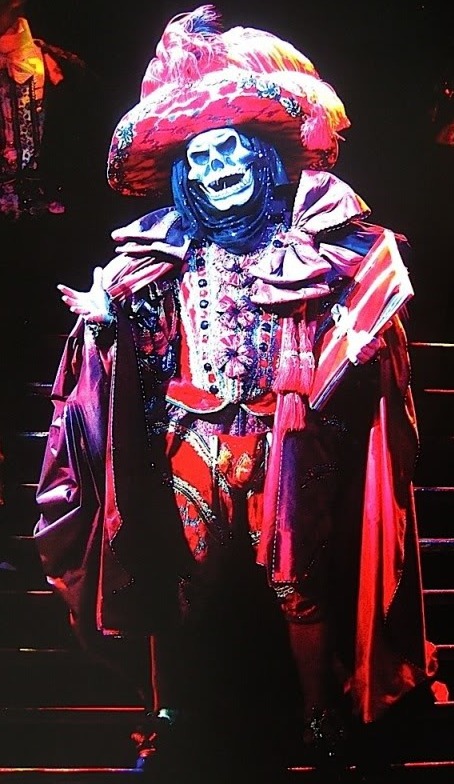
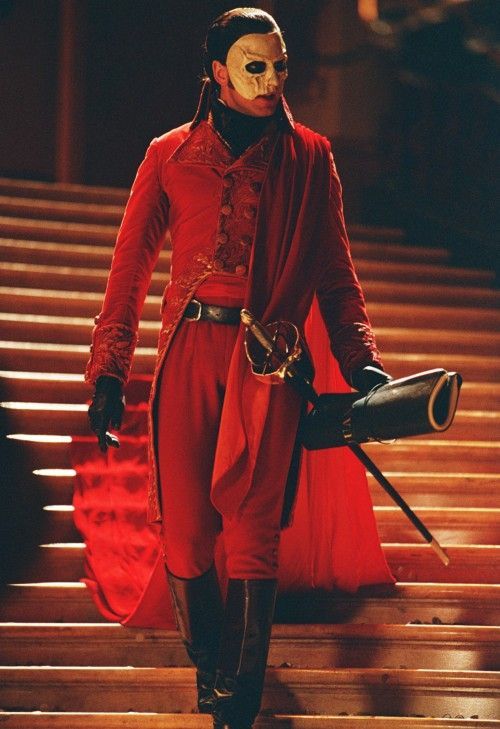
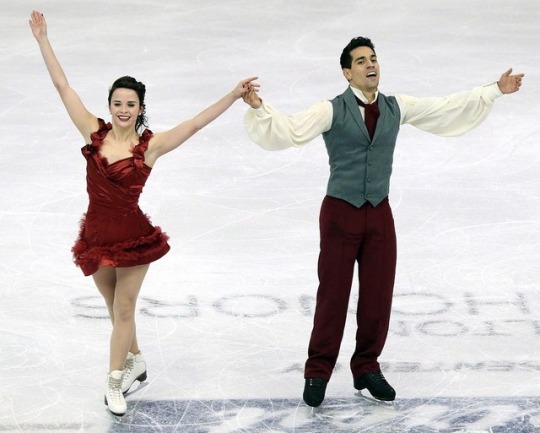
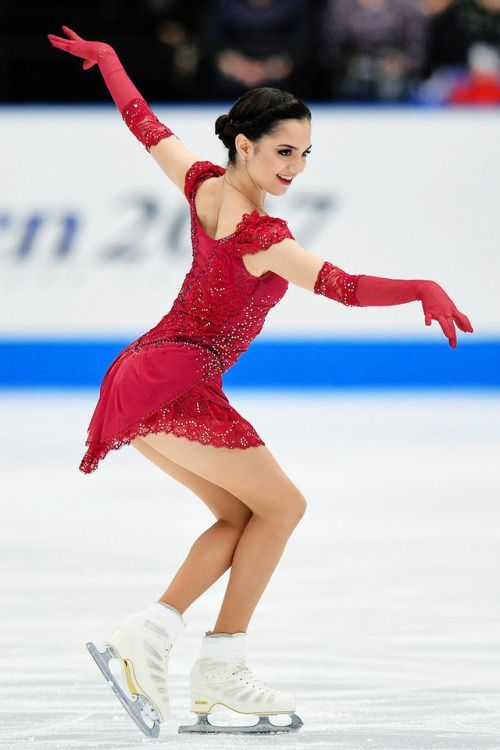
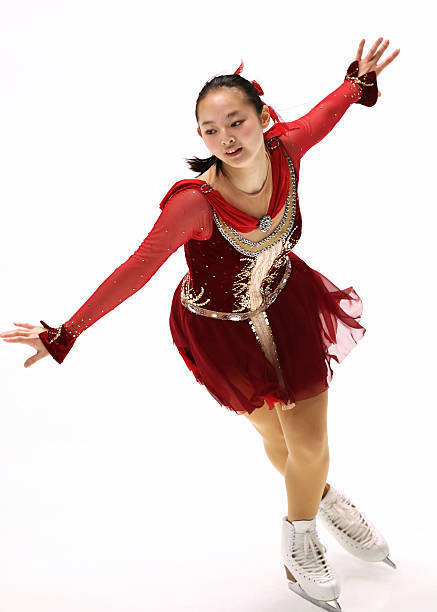
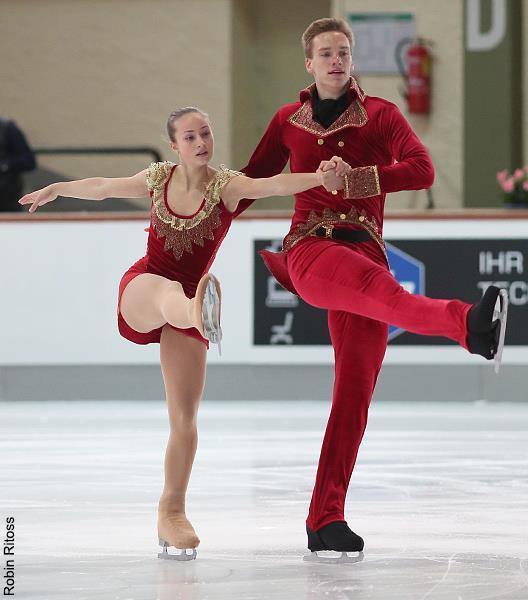
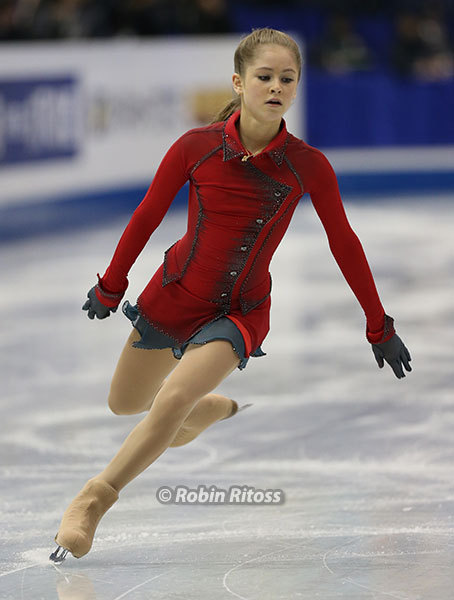
Phantom On Ice: Red Death Edition
* photos from figureskatingcostumes
#The Phantom of the Opera#Phantom of the Opera#figure skating#women's skating#men's skating#pair skating#ice dancing#ALW#Red Death#Masquerade
25 notes
·
View notes
Text
Leo De La Iglesia Leads After Short at Nebelhorn Trophy
Friday, September 28, 2018
Reigning and two-time US National Champion, Leo de la Iglesia, has a slight lead after the short program at the Nebelhorn Trophy.
The Nebelhorn Trophy takes part in Oberstdorf, Germany. It is a part of the Challenger Series, a series of senior-b events designed to open up competition to more skaters, as opposed to the selective and invitation-only Grand Prix Series. Many Grand Prix skaters use the series to jumpstart the season, get out the kinks, and/or get their programs out in front of the judges before the season begins.
The first Challenger Event was back in August, won by Japanese skater Hideki Fukushima. The series resumed two weeks ago with the US International Figure Skating Classic in Salt Lake City, Utah and the Lombardia Trophy in Bergamo, Italy. The US Classic was won by British figure skating, Adam Loughton, while the Lombardia Trophy was won by three-time European Bronze Medalist, Michele Crispino.
Last week the series continued with the Ondrej Nepala Trophy in Bratislava, Slovakia, and the Autumn Classic in Oakville, Ontario. The Ondrej Nepala was won by 2013 US National Champion Jack Morgan, with 2016 Japanese National Champion Kenjirou Minami taking third. The Autumn Classic was won by two-time Grand Prix Final Bronze Medalist Jean-Jacques Leroy with South Korean star Seung-gil Lee taking silver.
Leo de la Iglesia hopes to add his name to that list. The 22-year-old skated a solid, though not perfect program, scoring a 93.01, which is on par with the highest scores of the season so far.
Skating to the sensual and jazzy “So Into You” by the Atlanta Rhythm Section, his only mistake was an under-rotation call on his Quad Lutz, which he also stepped out of. “I’m proud of how I skated today,” he said to reporters. “I know I can do better, but this is a great place to start with Skate America in a few weeks. I want to be prepared for the Grand Prix season, and I think I did that today.” There he will face not only Crispino but also 2018 Four Continents Champion Phichit Chulanont and 2018 Olympic Silver Medalist Georgi Popovich.
In second place is Adam Arsenau of Canadsla with a score of 90.63, who skated a solid and nearly clean program, though he missed levels on a couple of his elements. In third place is Alexander Carpenter of the US. The 24-year-old skated a clean program, though he received no Level 4’s on any of his elements, scoring 86.21. The competition concludes tomorrow and should prove to be a very good competition.
8 notes
·
View notes
Text
Who’s Who of the 2017 Grand Prix Series, Part 2: Pairs
Here’s the second part of our Grand Prix previews, covering the dynamic pairs discipline! Don’t forget to check out our ice dance and men's previews, as well as our program recommendation playlist for currently-competing pairs and dance teams.

With high-flying throw jumps and twists where the female partner is thrown several feet into the air, pairs skating is the most breathtaking - and dangerous - discipline of figure skating. Pairs teams are scored on a wide variety of elements, including synchronized jumps and spins, throw jumps, lifts, twists, etc. (For more information on elements in pairs skating, see our introduction to skating guides.) The current pairs field is the strongest that it’s been in years, with several contenders at the top and no way to predict who will ultimately occupy the highest position in the world. Recent seasons have also seen the rise of teams from countries without a strong pairs or skating background. If you haven’t watched pairs skating before and if you like badass ladies with short hair now’s a good time to start!
———————————————————
WENJING SUI / CONG HAN
Representing: China
Ages: 22/25
ISU Personal bests: SP 81.23, FS 150.83, total 232.06
ISU Season’s best: N/A
Notable titles: 2017 World Champions, 2015 & 2016 World Silver Medalists, 4-time Four Continents Champions, 2-time Grand Prix Final Bronze Medalists
Programs: SP - Hallelujah; FS - Turandot
Grand Prix events: Cup of China, NHK Trophy
Resilience is Wenjing Sui’s middle name. After teaming up with Cong Han in 2007, the pair enjoyed runaway success on the junior level, winning the Junior World Championships 3 years in a row and the 2012 Four Continents title before they were even fully seniors. But the all-too-common tragedy of injuries struck; Wenjing was diagnosed with a chronic bone injury in her feet, and Sui/Han were forced to miss most of the 2012-13 season. Inconsistency during the 2013-14 Olympic season caused them to miss a spot on China’s Sochi Olympic team. Turning disappointment into motivation, Sui/Han reinvented themselves at the beginning of the new Olympic cycle, polishing their skating and establishing themselves as China’s leading pair with a silver medal at the 2015 World Championships. However, Wenjing’s injuries continued to loom over the team. Even as they set personal bests and new records - they were the first pairs team to perform a clean throw quad salchow and quad twist in the free skate, at the 2016 Four Continents Championships - Wenjing’s ankle ligaments were all but destroyed and she was unable to walk without pain. She underwent surgery on both feet in May 2016, two months after Sui/Han won their second World silver medal. After several months of rehabilitation, Sui/Han made a triumphant return to competition at the 2017 Four Continents Championships, blowing away the rest of the field. They followed up a month later with two nearly flawless performances at the 2017 World Championships, winning their first World title with a mesmerizingly emotional free skate to “Bridge Over Troubled Water”, which told the story of their partnership and journey.
Sui/Han are known for their charisma, range of expression, emotional connection on the ice, and powerful technical elements, especially their quad twist and throw triple flip. They are capable of gaining high Grades of Execution. If they can perform consistently on the Grand Prix, they will likely qualify for the Final and set themselves up for the Olympic title in Pyeongchang. However, the team will need to overcome their habitual weakness, the side-by-side jumps. Sui/Han will begin their international season at home in Beijing, competing two weeks in a row at Cup of China and NHK Trophy.
Random off-ice facts: Wenjing enjoys watching the anime Natsume’s Book of Friends. She started skating after she met a skating coach living above her grandmother’s car wash. Cong was scouted for skating when he was in kindergarten. He once bought Wenjing a ukelele because she thought it was pretty. Despite their relative youth, Sui/Han are the longest-lived pair in the current field, having skated together for 10 years.

———————————————————
ALIONA SAVCHENKO / BRUNO MASSOT
Representing: Germany
Ages: 33/28
ISU Personal bests: SP 79.84, FS 150.46, total 230.30
ISU Season’s best: 211.08
Notable titles: 2017 World Silver Medalists, 2016 World Bronze Medalists, 2016 & 2017 European Silver Medalists
Programs: SP - Ameksa: Fuego; FS - La terre vue du ciel
Grand Prix events: Skate Canada, Skate America
The oldest female pairs skater in the current field, Aliona has had a storied career. With former partner Robin Szolkowy, she was a 5-time World Champion and 2-time Olympic bronze medalist. Following Robin’s retirement after the 2013-14 Olympic season, Aliona teamed up with Bruno Massot, who previously skated for France. Savchenko/Massot debuted internationally in the 2015-16 season and immediately climbed to the top of the pairs field, winning silver at the 2016 European Championships and bronze at their first World Championships in the same year. The team began training a throw quadruple salchow and throw triple axel, continually attempting them in competition during the 2016-17 season, although they never landed either jump cleanly. An injury Aliona sustained while practicing the dangerous throw 3A caused the team to withdraw from the 2016 Grand Prix Final. They fought back to win silver at both the 2017 European Championships and World Championships, scoring less than two points behind Sui/Han at the latter. Savchenko/Massot’s strengths lie in their creative programs, lifts, and enormous triple twist, but their risky throw jumps can sometimes derail their performances. They started their season at the 2017 Nebelhorn Trophy, placing second behind the Russian team Evgenia Tarasova/Vladimir Morozov. At Skate Canada, Savchenko/Massot will face home favorites Meagan Duhamel/Eric Radford, as well as the rising French stars Vanessa James/Morgan Cipres; they will compete against Duhamel/Radford again at their second Grand Prix event, Skate America.
Random off-ice facts: Aliona often designs the team’s costumes. Bruno currently does not have German citizenship; he still needs to pass a German language test in order to become a German citizen and allow the team to compete at the Olympics.

———————————————————
EVGENIA TARASOVA / VLADIMIR MOROZOV
Representing: Russia
Ages: 22/24
ISU Personal bests: SP 80.82, FS 146.76, total 227.58
ISU Season’s best: 218.46
Notable titles: 2017 World Bronze Medalists, 2017 European Champions, 2016 Grand Prix Final Champions, 3-time Russian National Medalists
Programs: SP - Piano Concerto No.2 (Rachmaninoff); FS - Candyman
Grand Prix events: Rostelecom Cup, Internationaux de France
A fairly young team who have been competing together since juniors, Tarasova/Morozov had a breakthrough season in 2016-17, winning the Grand Prix Final, European Championships, and bronze medals at the 2017 World Championships. The team is known for their solid technical elements, especially their triple twist, and they have also performed the quad twist in competition. With the health of teammates Ksenia Stolbova/Fedor Klimov still in question, Tarasova/Morozov have gradually set themselves up as Russia’s leading pairs team and the latest in a long line of champions from that country. Although they slightly trail behind Sui/Han and Savchenko/Massot in PCS, their technical ability makes them a strong threat for any podium. They began their season with a win over Savchenko/Massot at 2017 Nebelhorn Trophy, and will open their Grand Prix season at Rostelecom Cup, where they will face off against reigning Russian National champions Stolbova/Klimov. At Internationaux de France, their second Grand Prix, Tarasova/Morozov will compete against home favorites Vanessa James/Morgan Cipres.

———————————————————
MEAGAN DUHAMEL / ERIC RADFORD
Representing: Canada
Ages: 31/32
ISU Personal bests: SP 78.39, FS 153.81, total 231.99
ISU Season’s best: 202.98
Notable titles: 2015 & 2016 World Champions, 2-time World Bronze Medalists, 2-time Four Continents Champions, 2014 Grand Prix Final Champions, 6-time Canadian National Champions
Programs: SP - With or Without You; FS - Muse Medley
Grand Prix events: Skate Canada, Skate America
Teaming up in 2010, Duhamel/Radford steadily rose through the international ranks, breaking through onto the World podium in 2013. They medaled at Worlds consistently for the next 3 seasons in a row, picking up gold medals in 2015 and 2016 with strong technical performances. Duhamel/Radford’s strength lies in their high base values; they are one of very few pairs teams capable of performing side-by-side triple lutzes, and they have landed the throw quadruple salchow in competition several times. However, their risky elements can sometimes backfire. Duhamel/Radford had an up-and-down 2016-17 season. Fighting through Eric’s herniated disc, the team placed 7th at 2017 Worlds, their lowest placement at a World Championships since their debut. They are absolutely capable of rising to the top once again, but as with all other teams, it will come down to consistency. Duhamel/Radford skated a strong short program at the season-opening Autumn Classic International, but fell apart in the free skate to ultimately place behind Vanessa James/Morgan Cipres of France. They will face James/Cipres again at Skate Canada, as well as Savchenko/Massot and fellow Canadians Lubov Ilyushechkina/Dylan Moscovitch. At Skate America, they will compete against Savchenko/Massot and Xiaoyu Yu/Hao Zhang of China.
Random off-ice facts: Meagan is a vegan. She is married to her coach, Bruno Marcotte. Eric is openly gay; in June 2017, he became engaged to his boyfriend, Spanish ice dancer Luis Fenero. Eric is a musician and composer; he composed the 2016-17 free skate music of fellow Canadian skater Patrick Chan.

———————————————————
VANESSA JAMES / MORGAN CIPRES
Representing: France
Ages: 30/26
ISU Personal bests: SP 75.72, FS 146.87, total 222.59
ISU Season’s best: 210.48
Notable titles: 2017 European Bronze Medalists, 5-time French National Champions
Programs: SP - Make It Rain; FS - Say Something/Sense of Freedom
Grand Prix events: Skate Canada, Internationaux de France
Living proof that breakthroughs don’t always correlate with youth, James/Cipres had a stellar 2016-17 season after a coaching change to John Zimmerman in the USA. Since teaming up in 2010, James/Cipres showed potential but lacked consistency and harder technical elements until last season, when all their hard work came to fruition with a bronze medal at the 2017 European Championships. They became the first French pair to medal at Euros in 14 years. James/Cipres then placed a solid 8th at the World Championships, and set new personal best scores to win the pairs event at World Team Trophy. Always known for their sizzling chemistry, modern style, and Vanessa’s pantsuits, James/Cipres now have the technical ability to fight for the top. They have attempted the throw quadruple salchow in competition, although they have not yet landed it cleanly. Opening the new season at Autumn Classic International, James/Cipres nabbed a surprise win over Canadian champions Duhamel/Radford. If they can continue riding their momentum, more podium finishes can be expected in their future. James/Cipres will kick off their Grand Prix season at Skate Canada against Savchenko/Massot and Duhamel/Radford, and will face off against the Russians Tarasova/Morozov at Internationaux de France.
Random off-ice facts: Vanessa was born in Canada and competed for the USA and UK before moving to France.

———————————————————
KSENIA STOLBOVA / FEDOR KLIMOV
Representing: Russia
Ages: 25/27
ISU Personal bests: SP 76.15, FS 154.60, total 229.44
ISU Season’s best: 184.78
Notable titles: 2014 Olympic Silver Medalists, 2014 World Silver Medalists, 3-time European Medalists, 2015 Grand Prix Final Champions, 3-time Russian National Champions
Programs: SP - Tango de Besame; FS - Carmen Suite
Grand Prix events: Rostelecom Cup, NHK Trophy
Surprise silver medalists at the Sochi Olympics, where they skated two personal-best programs in front of a home crowd, Stolbova/Klimov appeared to have established themselves as the Russian team to beat for the following Olympic cycle. Their winning free skate at the 2015 Grand Prix Final featured a side-by-side 3T3T2T combination - very rare to see in pairs skating - and nearly broke the World record set by 2014 Olympic champions Tatiana Volosozhar/Maxim Trankov. Unfortunately, Stolbova/Klimov have been plagued by injuries in recent years, missing the first half of the 2016-17 season and placing off the podium at both the 2017 European and World Championships. As of this season, their health is still in question; they finished 3rd at Finlandia Trophy with a score much lower than what they’re capable of. Stolbova/Klimov are known for their throw jumps and side-by-side jumps when they’re on; their weakness is the triple twist. With unusual, out-of-the-box programs and all-around polished skating, they are a team to be reckoned with at their height; however, their condition on the Grand Prix remains to be seen. Stolbova/Klimov will face their younger Russian teammates Tarasova/Morozov at Rostelecom Cup, and reigning World champions Sui/Han at NHK Trophy.

———————————————————
XIAOYU YU / HAO ZHANG
Representing: China
Ages: 21/33
ISU Personal bests: SP 75.34, FS 136.28, total 211.51
ISU Season’s best: N/A
Notable titles: 2016 Grand Prix Final Silver Medalists, 2017 Asian Winter Games Champions
Programs: SP - Swan Lake; FS - Star Wars
Grand Prix events: Cup of China, Skate America
The story of how Yu/Zhang came to skate together is a convoluted one. With previous partner Yang Jin, Xiaoyu was a 2-time Junior World Champion and the 2016 Four Continents bronze medalist. Hao Zhang, a familiar name on the pairs skating scene, had two previous partnerships. With longtime partner Dan Zhang (no relation), he was the 2006 Olympic silver medalist and 4-time World medalist. Following Dan Zhang’s retirement in 2012, Hao Zhang teamed up with Cheng Peng and competed with her at the 2014 Sochi Olympics. Peng/Zhang won a silver medal at the 2015 Four Continents Championships and placed 4th at the 2015 World Championships. After a relatively disappointing outing for Chinese pairs at 2016 Worlds, coach Hongbo Zhao decided to have Yu/Jin and Peng/Zhang swap partners, despite protests from Xiaoyu. Nevertheless, Yu/Zhang competed together for the first time in the 2016-17 season and achieved some significant results, including silver at the 2016 Grand Prix Final and 4th place at 2017 Worlds. Yu/Zhang’s strong points are Xiaoyu’s grace and elegance, as well as their technical elements, especially their triple twist. Their main weakness is their side-by-side jumps; Xiaoyu struggled with them at Cup of Nice, the team’s first international competition of the season, although they won the event overall. Yu/Zhang will face their teammates Sui/Han at Cup of China, and both Duhamel/Radford and Savchenko/Massot at Skate America.
Random off-ice facts: Xiaoyu is fluent in Japanese, having taught herself the language by watching anime. She has given interviews in Japanese with the Japanese media and translated for her teammates.

———————————————————
CHENG PENG / YANG JIN
Representing: China
Ages: 20/23
ISU Personal bests: SP 73.33, FS 136.48, total 204.49
ISU Season’s best: 198.03
Notable titles: 2017 Asian Winter Games Silver Medalists
Programs: SP - Assassin’s Tango; FS - The Butterfly Lovers
Grand Prix events: Skate Canada, Internationaux de France
The other half of the Chinese pairs swap, Peng/Jin have received relatively less attention in the Chinese media than Yu/Zhang. However, the team has gelled together admirably well in only a season of competition together and posted solid results throughout 2016-17. They qualified for the 2016 Grand Prix Final, placed 5th at Four Continents, and won the silver medal at the 2017 Asian Winter Games. They kicked off the new season with a gold medal at Finlandia Trophy, despite mistakes in the free skate. Peng/Jin’s skating has a fresh and playful energy, backed up by the trademark technical prowess of Chinese pairs. If they can improve their consistency and continue to polish their skating, Peng/Jin may eventually rise to be one of the top teams of the pairs field. They will face stiff competition at both Skate Canada and Internationaux de France, but clean performances can give them a shot at the podium.
Random off-ice facts: Peng/Jin have an easy-going relationship. When Cheng struggled with doubts in the early days of their partnership, Yang cheered her up by cooking for her. Yang often hangs out with fellow Chinese skater Boyang Jin. They play around with pairs elements for fun.

———————————————————
LUBOV ILYUSHECHKINA / DYLAN MOSCOVITCH
Representing: Canada
Ages: 25/33
ISU Personal bests: SP 73.14, FS 133.05, total 206.19
ISU Season’s best: 183.80
Notable titles: 2017 Four Continents Bronze Medalists, 3-time Canadian National Medalists
Programs: SP - In the Air Tonight; FS - At This Moment
Grand Prix events: Skate Canada, Internationaux de France
Lubov skated for Russia as a junior, winning the 2009 Junior World title with Nodari Maisuradze. Dylan previously skated with Kirsten Moore-Towers, with whom he won the 2011 Canadian National title and a Four Continents silver medal in 2013. Ilyushechkina/Moscovitch teamed up in 2014 following Kirsten’s decision to split with Dylan. The new team made steady progress, establishing themselves as one of Canada’s top 3 pairs, and achieved a career-best 6th-place finish at the 2017 World Championships, as well as a bronze medal at Four Continents. Ilyushechkina/Moscovitch are known for their unique lifts, transitions, and expressive skating, but Lubov often struggles with side-by-side jumps. They finished 4th at Finlandia Trophy and will compete next at Skate Canada and Internationaux de France, where they have a chance to medal if they can produce clean performances.
Random off-ice facts: Lubov became a Canadian citizen in September 2017, making the team eligible for the 2018 Winter Olympics.

———————————————————
OTHER SKATERS TO WATCH
Julianne Seguin / Charlie Bilodeau (CAN): Assigned to Rostelecom Cup and NHK Trophy. 2015 Junior World Silver Medalists, 2-time Canadian National Medalists. Teamed up in 2012. Promising young team hampered by injuries in recent seasons, including a series of concussions suffered by Julianne. Made a solid return with a bronze medal at 2017 Autumn Classic. Can contend for medals on the Grand Prix, depending on their condition. Julianne used to compete in both singles and pairs at the same time, winning the bronze medal at 2014 Autumn Classic in ladies’ singles.
Natalia Zabiiako / Alexander Enbert (RUS): Assigned to Skate Canada and Skate America. 2017 Russian National Bronze Medalists, 2016 Rostelecom Cup Silver Medalists. Teamed up in 2015; Natalia previously skated for Estonia.
Kristina Astakhova / Alexei Rogonov (RUS): Assigned to Rostelecom Cup and NHK Trophy. 2016 Rostelecom Cup Bronze Medalists. Teamed up in 2014. Known for their quirky programs.
Kirsten Moore-Towers / Michael Marinaro (CAN): Assigned to Cup of China and Skate America. 2017 Canadian National Bronze Medalists. Missed most of the 2016-17 season after Kirsten sustained a concussion in practice, but finished the season strong at Four Continents and World Team Trophy. Kirsten previously skated with Dylan Moscovitch; she teamed up with Michael Marinaro in 2014.
Anna Duskova / Martin Bidar (CZE): Assigned to Cup of China and Internationaux de France. First skaters from the Czech Republic to win the Junior World Championships in 2016. Placed 7th at their first European Championships in 2017 and 14th at Worlds. Making their senior Grand Prix debut this season.
Valentina Marchei / Ondrej Hotarek (ITA): Assigned to Rostelecom Cup and Cup of China. Placed 9th at 2017 Worlds, started their season with bronze at Lombardia Trophy. One of few teams able to do side-by-side triple lutzes. Teamed up in 2014. Valentina used to compete in singles, winning Italian Nationals 5 times. Ondrej previously skated pairs with Stefania Berton and won the bronze medal at the 2013 European Championships.
Nicole Della Monica / Matteo Guarise (ITA): Assigned to Cup of China and Internationaux de France. 2-time Italian National Champions, 2017 Lombardia Trophy and Finlandia Trophy silver medalists.
Alexa Scimeca Knierim / Chris Knierim (USA): Assigned to NHK Trophy and Skate America. 2015 US National Champions, 2016 Four Continents Silver Medalists. Teamed up in 2012. USA’s top pair in recent years, missed most of last season due to illness. Returned to place 6th at Four Continents and 10th at Worlds. Known for their triple twist. Married each other in 2016.
150 notes
·
View notes
Text
Alexa Scimeca Knierim - Figure Skater
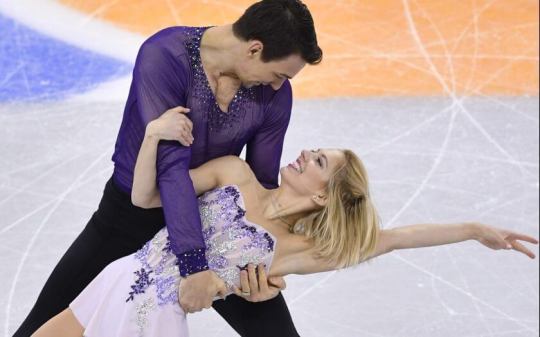
Born in 1991, Alexa Scimeca Knierim is an American pair and figure skater. Along with Chris Knierim who is her former skating partner and husband, she is a three-time Grand Prix medallist and a three-time U.S. national champion. Gold medals and more Scimeca attended College of DuPage and Pikes Peak Community College and began skating in 1998. She teamed up with Chris Knierim in 2012, And the pair won the gold medal in their first international event, the 2012 Coupe Internationale de Nice in October. Next, the pair continued winning the silver medal at the 2013 US Championships and the pewter medal at the 2014 US Championships. With that, Scimeca/Knierim was qualified to the 2014 Winter Olympic team and also they then won the bronze medal at the 2014 Four Continents Championships. The winning journey continued and the pair of Scimeca and Knierim won the gold medal in their first ISU Challenger series event, the 2014 US International Classic. In the same year, they won the bronze medal at 2014 Nebelhorn Trophy. Highest scores ever recorded by a U.S. pair team It was the 2015 U.S. Championships where Scimeca / Knierim showed their prominence and captured their first national title. The couple began their season at the 2015 Nebelhorn Trophy and Skate America where they won the silver medal in both competitions. The following week, they won the gold medal at the 2015 Ice Challenge in Graz, Austria. #hotathletes #hotfemalewintersports #hotfigureskater #hoticedancer #hotskater #hottestathletes #sexyicedancer #sexyskater #usfigureskater Read the full article
0 notes
Photo


Jordan Ju competing in the 2013 Nebelhorn Trophy.
(Source: eislauffotos.de)
3 notes
·
View notes
Text
Intro post: Tatsuki Machida

Now that the off-season is officially here, skating fans will have the opportunity to see their retired faves again and in Team Japan’s case the number of retired faves has been increasing every year. Of all TJ retired “stars”, one of them stands out through their personality, way of thinking, skating, and why not - refusal to speak to the media again.
Tatsuki Machida was what people call a “2nd tier” skater until his last couple of competitive seasons. He was the “almost there but not quite” guy. Nobody in his family was involved with skating and he was doing it just for fun until he saw Daisuke Takahashi and decided he wanted to become a skater like him.
His life story has inspired skaters and fans alike; thanks to him, many people were encouraged watching him get out of the crowd and reach the top. It’s probably one of the most beautiful “underdog becomes hero” fairy tales. But just like every other inspirational story, there’s more pain and sadness behind the medals than fulfillment and happiness.
Early life
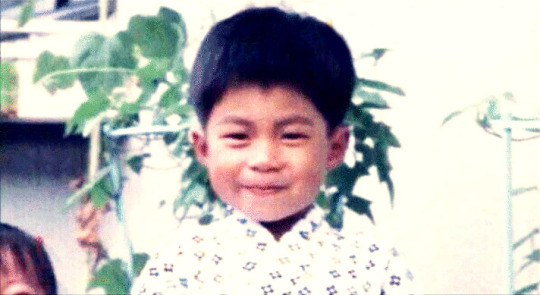
He was born a premature baby and the doctors told his mother there were chances he wouldn’t survive. His mother stood by his incubator praying until he started feeling better.
He has a younger sister Sakura and his father is a company employee at Mazda
He was very close to his maternal grandmother Kumiko, who gave him a handmade amulet. Kumiko embroidered his silhouette on it. He always kept it in the pocket of his warm up jacket.
When Kumiko fell sick, he wrote a letter to her: "My mother wants to visit Tottori to take care of you, but she can't. She can't leave here since I'm a figure skater. I feel very sorry for it." Kumiko died of cancer.
He used to live in Hiroshima. His mother worked in two places at the same time to pay the costs for his skating.
When he was in the second year of University, his mother fell sick and spent over a month in the hospital. As he had seen how hard she worked, he told her "I'll try my best to earn prize money and to be a skater who will be invited to many shows. So please leave one of your two jobs"
His mother and sister often went to see him compete. He is very close to his sister.
Although he was living in Hiroshima, he decided to attend the same high school as Daisuke Takahashi in Kurashiki city, Okayama. He had to take the train every day.
He was obsessed with video games so much that one time he showed up at the rink with his console instead of his skating boots.
He started taking interest in books when he traveled by train to school and back.
He moved to Osaka when he entered Kansai University and joined the Kansai University skating club.
The Kansai University skating club is now famous for its skaters: Nobuo and Kumiko Sato, Daisuke Takahashi, Nobunari Oda, Satoko Miyahara and Marin Honda.
He became close friends with Takahito Mura and Keiji Tanaka.

Making a name for himself
He won the Jr National Championships in 2006 and placed 9th at the 2007 Jr World Championships
In 2008 he met Yuzuru Hanyu with whom he later developed a new friendship
In 2009 he finished 4th at the National Championships and was listed as first substitute for the Vancouver Olympics
In 2010 he won his first major international medal, a silver at the Four Continents Championships
He and Yuzuru Hanyu were assigned to their first (and same) Grand Prix event but none of them had a strong debut; Tatsuki had started trying quads in competition but he only landed one at the 2010 Nebelhorn Trophy, where he won the gold medal
In 2011 he moved to Lake Arrowhead to train with Anthony Liu, a coach he had met earlier at a summer camp
Anthony Liu became like a father - older brother figure for him. With his help, he started to become more consistent
In 2012 he contacted Phillip Mills after watching Ashley Wagner’s “Black Swan” program. He wanted a similar “bird-themed” program for himself. Mills choreographed Firebird for him
He became very close to Mills and his family; Mills would later describe him “A diamond; no colors, just sparkles. Sparkles of talent.”

Rise to fame and retirement
By 2012 he had become Phillip Mills and Stephane Lambiel’s new muse; he was skating a Lambiel program for his short and a Mills program for his long
He finally qualified for the Grand Prix Final when he was 22, but finished last
He had a strong desire to go to Worlds but he finished 9th at the Japanese Nationals that same season
He was deeply disappointed with himself but was already facing the Olympic season and he vowed he would rise from his own ashes. He shaved his head and started choreographing his first program, Byakuyako.
At the start of the 2013-2014 season, he had only landed 2 ratified quads in competition. From then on he landed 28 in just a season and a half.
He reached the Nationals podium for the first time, qualified for his first Olympics and Worlds and became the #2 man in the country and the world
He used to say he was aiming for the gold medal at the 2015 Worlds and was considering competing until 2018
He was talking about his FS as something that had never been seen before, and a challenge for him artistically and technically
He forbid the media to disclose details about his new programs and he used to practice with the windows of the rink covered
His new SP, Fantasy for Violin and Orchestra, was inspired by his personal experiences in his love life
Phillip Mills told the media it was only the beginning of what Tatsuki had to offer to the audience
Nobody knew he intended to retire until the day he announced it
The Aftermath
His mother, Yayoi Machida: “At first he was saying his goal was the World Championships. He would have possibly gone to Worlds if he had made the podium at the Nationals. Perhaps he thought he didn’t deserve to.”
He always brought around 5 books with him to every competition he went and always valued the artistic side of figure skating: for his FS Symphony no 9 he held his opening pose for 20 seconds so that the music could be longer, as the limit of 4:30 minutes was too short for the symphony.
Takahiko Kozuka: "Whenever we had meetings and press conferences we all enjoyed his comments which are well known as the ‘Machida quotes’. His way of thinking was completely different from ours and that will always be my perception of him. He was very different from me or any other skater for that matter. He was one of a kind."
Yuzuru Hanyu: “My ideal image of a man is Tatsuki. As an athlete and as a performer, he never turns away from the road he’s chosen.”
He told Takahito Mura “I know you have the ability so I’ll be counting on you to carry on the years I’ve given up on and achieve the things I couldn’t.” Mura said Tatsuki could have stayed for longer.
“We enjoyed chatting even though he was never the type who talked much,” Mura describes Machida. “But he’s always been unique, and his breakthrough came around the time of ‘Timshel’. I was very shocked to find out that a skater who had been competing with me all this time had retired. His presence has been a big part of my life and I am truly grateful for his words - 'I entrust everything to you’. I have to get good results and do my best for him."
"He retired just so suddenly. Otsukaresama from the bottom of my heart,” Daisuke Murakami said, choking up. “I’ve been rooting for him so much and I’ve worked so hard to catch up with him… he’s truly been an inspiration. The first word he told me was 'ganbatte’ (give your best). I will do that, keeping his words in my mind.”
At the 2012 NHK Trophy, Murakami suffered a serious injury. The socket in his right shoulder was dislocated and he needed an urgent surgery. He had to go on a long hiatus from skating to recover and he thought of retirement. But the only thing that changed his mind was Machida.“He was amazing,” Murakami says, referring to Machida’s 2013-2014 season. “He had a brilliant breakthrough at that time. His presence at the Sochi Olympics inspired me and I decided to keep going because I haven’t reached my full potential yet."
Yoshinori Onishi, his last coach: “When I heard he retired, my wife and I burst into laughter. That’s just like him, I thought.”
Machida would always say “I’m the 6th ranked skater” and other such timid things, so Onishi told him “Humans are like this, if you only say negative words that’s how things will be. Carrying out one’s own words is essential. If you set a huge goal for yourself won’t you be able to do it and try your best?”
“Machida’s true character is actually clumsy. This boy who struggled with chasing both grad school and skating, he did so well,” Onishi said.
Phillip Mills: “Tatsuki’s Ladies in Lavender was about something completely different but I’m hoping that the people viewed it as something that helped themselves. It’s many different things that inspire me to try and give the skaters what they deserve. Something that will help them not only grow artistically but be successful competitively and to inspire hopefully the world and develop into an artist. Not just an athlete, but an artist as well. And I think Machida has done that, with me the best of anybody thus far. I was so fortunate to work with him for all those three seasons.”
Personal life
He is currently living in Saitama, near Tokyo, attending and working at the Waseda University.
He wants to become a choreographer, art director and coach. He’d like to direct his own ice show.
He is also dedicated to finding a way to facilitate the balance between skating and studies for elite athletes.
He considers himself “simply a student, no longer a star” and has never spoken to the media since he retired in 2014.
However, he keeps getting media attention whenever he appears and is always welcomed with a loud round of applause.
When his appearance was confirmed at Prince Ice World right after his retirement, the tickets were sold out in less than 2 hours. Moreover, BS Japan broadcasted the show live for the first time in its history due to Machida’s sudden popularity.
While a classical music nerd, he also enjoys pop music and Korean pop music
He used to have a stalker who followed him closely wherever he went for about a year and a half; the stalker has disappeared from social media platforms for almost a year
He was constantly rumored to be in a relationship with fellow skater Haruka Imai; in 2014 she traveled with him in the US and Tatsuki introduced her to Phillip Mills, who choreographed her new programs

Skating style and qualities
Journalist Jean-Christophe Berlot: “As soon as Tatsuki Machida, the 2014 world silver medalist from Japan, entered into the Meriadeck rink, TV crews from Japan started following him wherever he would go, from his warm-up to concentration time to -- of course -- his practice sessions. "You can always feel when a master is entering into a hall," former great Pierre Brunet (who coached Carol Heiss to her Olympic victory) used to say. Machida's taking part in the Trophée should be an event in itself in Bordeaux.”
Tatsuki Machida on his own skating
I see figure skating as a performing art. A quadruple jump, like a quad toe, can be a piece of art in itself. A beautiful surrounding helps going into that direction, at least. So, it's important for me to use my technical capacity to create art. If you want to give a good performance, you need to understand culture, and to study the music, the composer's life, the choreography of your programs.You know -- (he smiles) -- in English, we say "figure skating," but in French, they say "artistic skating." I think they are right. Figure skating should be a performing art, just like ballet or dance. It belongs to the same category. I cherish performing arts.
During my time on the ice, I forget about the competition. I tell myself, "This is my stage." In this way I don’t just think of jumps, scores or medals. I think of expression. Jumping is also a way to express oneself. A jump is a piece of vocabulary to express one's feelings. I have to say that my skating career is 18 years old. I have worked on each one of these jumps all year long, and this for 18 years. They are just expression. I don't think of them, I just do them.The rink is my stage, and all I want to do is to focus on expression.
A quad expresses strength. It is so powerful. When I land a quad, I can hear the audience react directly. In comparison, a triple will be an enhancement to the program. I love big audiences. I always want to show my art to the entire world. In Japan, skating arenas are much bigger than this one, and they are always full!I like big audiences, especially for my long program: We have chorus in the fourth movement of Beethoven's 9th Symphony, and a big audience makes it even more special!
Tatsuki Machida’s skating through the audience’s eyes
His skating style has always been described as “larger than life”, “dramatic”, “grand”, and even “royal”. He had a commanding presence on the ice and his jumps were huge. He had one of the best 3A and probably the best 3Lz among all Japanese men. There was (and still is) a lot of meaning behind his programs; a thought, a personal experience, a feeling. He skates with his heart on his sleeve. He takes you along in his journey. He has the posture and lines of a ballet dancer. His best work is perhaps “The Inheritor”, a tribute to skating itself. Every jump is included in the program, in between intricate transitions and balletic choreography. It is the very essence of Tatsuki Machida - the person, the skater, the artist.
youtube
More info, articles, edits and videos on http://tatsuki-machida.tumblr.com/
211 notes
·
View notes
Photo

kaitlyn weaver and andrew poje
bio/career accomplishments
Bio:
Two-time world medallists Kaitlyn Weaver and Andrew Poje have competed together for over a decade and have consistently medalled internationally: 15 medals on the ISU Grand Prix circuit, two ISU Grand Prix Final titles and two ISU Four Continents titles to add to their two world medals. Weaver and Poje skate with an emotion that draws fans into their programs, creating a remarkable connection, and making them a contender for gold at every event.
National Event Results:
2017 Canadian Tire National Skating Championships – 2nd Place
2016 Canadian Tire National Skating Championships – 1st Place
2015 Canadian Tire National Skating Championships – 1st Place
2014 Canadian Tire National Skating Championships – 2nd Place
2013 Canadian Tire National Skating Championships – Withdrew
2012 Canadian National Skating Championships – 2nd Place
2011 Canadian National Skating Championships – 2nd Place
2010 Canadian National Skating Championships – 3rd Place
2009 Canadian National Skating Championships – 3rd Place
2008 Canadian National Skating Championships – 2nd Place
2007 Canadian National Skating Championships – 3rd Place
International Event Results:
2017 World Team Trophy – 1st place (individual)/4th place (team)
2017 World Figure Skating Championships – 4th Place
2016 Four Continents Figure Skating Championships – 5th place
2016 Cup of China – 2nd place
2016 Rostelecom Cup -3rd place
2016 Team Challenge Cup – 1st place (individual)/ 1st place (team)
2016 World Figure Skating Championships – 5th place
2016 Four Continents Figure Skating Championships – 3rd place
2015 Grand Prix Final – 1st place
2015 Rostelecom Cup – 1st place
2015 Skate Canada International – 1st place
2015 Finlandia Trophy – 1st place
2015 World Team Trophy – 1st place (individual)/4th place (team)
2015 World Figure Skating Championships – 3rd place
2015 Four Continents Figure Skating Championships – 1st place
2014 Grand Prix Final – 1st place
2014 NHK Trophy – 1st place
2014 Skate Canada International – 1st place
2014 Nebelhorn Trophy – 1st place
2014 World Figure Skating Championships – 2nd place
2014 Olympic Winter Games – 7th place
2013 Grand Prix Final – 5th place
2013 Rostelecom Cup – 2nd place
2013 Skate Canada International – 2nd place
2013 U.S. International Classic – 2nd place
2013 World Team Trophy – 2nd place
2013 World Figure Skating Championships – 5th place
2012 Cup of China – 3rd place
2012 Skate America – 3rd place2012 Nepela Trophy– 1st place
2012 World Figure Skating Championships – 4th place
2012 Four Continents Figure Skating Championships – 3rd place
2011 Grand Prix Final – 4th place
2011 NHK Trophy – 2nd place
2011 Rostelecom Cup – 2nd place
2011 Skate Canada International – 2nd place
2011 Four Continents Figure Skating Championships – 4th place
2011 World Figure Skating Championships – 5th place
2010 Grand Prix Final – 5th place
2010 Skate America – 4th place
2010 NHK Trophy – 2nd place
2010 Four Continents Figure Skating Championships – 1st place
2009 Cup of China – 6th place
2009 Skate Canada International – 3rd place
2009 Four Continents Figure Skating Championships– 5th place
2008 Cup of China – 6th place
2008 NHK Trohpy – 7th place
2008 World Figure Skating Championships– 17th place
2008 Four Continents Figure Skating Championships– 5th place
2007 Eric Bompard – 7th place
2007 Skate Canada International – 6th place
2007 World Figure Skating Championships– 20th place
Junior International Event Results:
2007 Junior World Figure Skating Championships– 3rd place
2006 Junior Grand Prix – Liberec – 3rd place
2006 Junior Grand Prix – Taipei City – 3rd place
10 notes
·
View notes
Note
How does the Nebelhorn Trophy work this season, regarding Olympic qualification? Thank you!
Thanks for asking!
The first thing you have to keep in mind with Nebelhorn this season is that it is not just the Olympic Qualifying Event, it is also a part of the Challenger Series. This means that it is not just skaters from the non-qualified countries that will compete there, skaters from countries that have already qualified will be there. This absolutely gets confusing (especially if you’re streaming Nebelhorn at stupid o’clock in the morning) so you need to have a rough idea of who has already qualified and who hasn’t.
Qualifying a spot via Nebelhorn is actually very simple. If you are from a non-qualifying country, and you finish in the top six of the non-qualifying countries (for ladies and men; top four for pairs and dance), you qualify your country a spot for the Olympics. Yay! It’s important to note that that doesn’t always mean the skater has to come top six overall. In 2013, Brooklee Han was first among the non-qualified countries (earning Australia a ladies’ spot), but she was fifth overall, behind Elena Radionova (RUS), Miki Ando (JPN), Ashley Cain (USA) and Veronik Mallet (CAN), all of whom were from countries that had already qualified via Worlds.
In an Olympic year, each country is only permitted to send one entrant to Nebelhorn. This does help to make things slightly less confusing.
Nebelhorn is the Last Chance Saloon, so to speak. After Nebelhorn, there are no more opportunities. It is the end of the line. This also means that some skaters will prefer to skate injured at Nebelhorn rather than risk not qualifying (in 2013, Brendan Kerry (AUS) skated with a broken wrist - he would ultimately qualify the spot).
9 notes
·
View notes
Note
Pardon the ignorance. How does a skating season work? Will we see their Olympic programs prior to the Olympics?
No apologies needed and yes we will. We will probably get a few glimpses of it from HPC (high performance camp run by Skate Canada before each season) like we did this season with Prince. We most likely will find their music choices than also, although maybe since so many are already announcing we will find out before.
After, they will probably debut their programs in a B level competition (a.k.a Challenge Series) - from this list:
US International Figure Skating Classic - September 13-18, 2017
Lombardia Trophy - September 14-17, 2017
Autumn Classic International - September 20-23, 2017
Ondrej Nepela Trophy - September 21-23, 2017
Nebelhorn Trophy - September 27-30, 2017
Finlandia Trophy - October 6-8, 2017
Minsk-Arena Ice Star - October 27-29, 2017
Warsaw Cup - November 16-19, 2017
Tallinn Trophy - November 21-26, 2017
Golden Spin of Zagreb - December 6-9, 2017
My guess is they’ll do ACI again since if I understand correctly it’s in Montreal again and Finlandia Trophy (which they attended in 2013-2014 season) is too late in the season,
And then we’ll see them again in the 2 GP events they will be assigned out of this list:
Rostelecom Cup - October 20-22, 2017
Skate Canada International - October 27-29, 2017
Cup of China - November 3-5, 2017
NHK Trophy - November 10-12, 2017
Trophee de France - November 17-19, 2017
Skate America - November 24-26, 2017
My guess is they’ll do Skate Canada and NHK Trophy like this season (though they are just 2 weeks apart) and than score good enough to attend GPF.
Grand Prix Final - December 7-10, 2017
4 notes
·
View notes